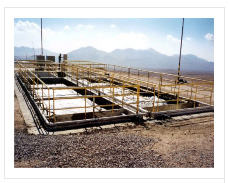Sewage
Sewage plants for sewage treatment are standardized according to their size, material and pattern making. For them they have plants in steel, concrete or reinforced fiber. The method is conventional extended aeration or aeration. Both alternatives have advantages, however on the final quality of water, may outweigh extended aeration.
Treatment plants are for designs that seek a definite purpose according to the need for treatment of effluents or discharges from a specific process. Generally, treatment plants of Liquid Industrial Wasteare logical systems of separation processes, defined as primary treatment (separation), Secundary (biological) and tertiary (or other heavy metals), which seek to re-use or discharge water comply with current regulations.
In Aguasin we count with professionals dedicated to delivering the best solutions. Contact Us and we will answer your request.

Denitrifiers and Digesters
Waste water, the product of organic activity, may contain an unbalance of nutrients (nitrogen / phosphorus) which requires to incorporate the design of treatment plants, an additional denitrification stage to stage traditional aeration. In turn, the great generation of sludge in sewage plants must be digested until their total biological inactivity (mineralization). For this process, the treatment plant considered a stage of digestion (aerated) from which the sludge is removed for concentration or disposal for the benefit of soil.
Activated sludge conventional and extended aeration
The domestic sewage generated by human use have an organic load that must be removed before any disposal to a water body. To reduce the organic load was used aerobic bacteria that feed on the organic load. The kinetics of organic load reduction depends on the bacterial flora (activated sludge) that is in contact with water. The sludge age, the amount of air contact time and determine the design of extended aeration equipment or conventional ventilation.
Aerial-Rotors
Corresponds to a design in which the oxygen is incorporated to the sewer by means of a rotatory system. The system catches oxygen in its superficial phase and frees it in its submerged phase. It presents installation space advantages and energy saving, which then become better operation costs.
